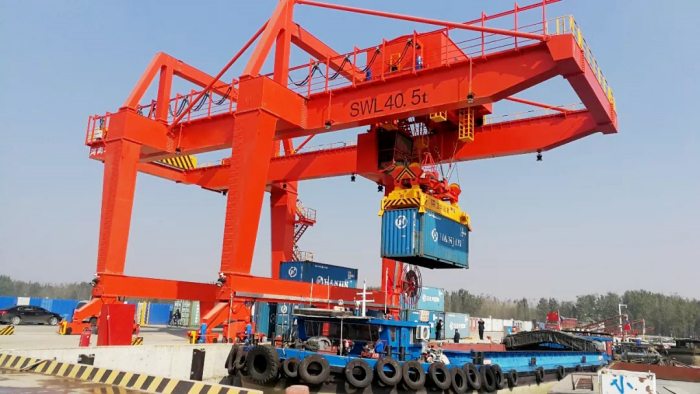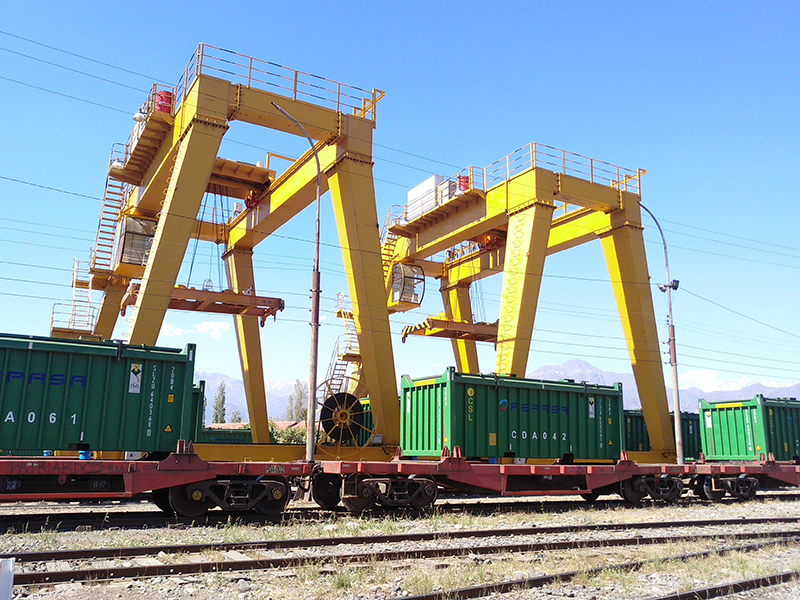In the dynamic world of container terminals, efficiency and productivity are paramount. The utilization of Rail Mounted Gantry (RMG) cranes plays a pivotal role in optimizing container terminal performance, streamlining operations, and enhancing overall efficiency. This article explores the significance of RMG cranes, their features, benefits, and how they contribute to maximizing container terminal performance.
Introduction to RMG Cranes
Rail Mounted Gantry (RMG) cranes are specialized gantry cranes used for lifting and moving shipping containers within container terminals. Unlike Rubber Tyred Gantry (RTG) cranes that operate on rubber tires, RMG cranes are mounted on rails, allowing them to travel along designated tracks within the terminal yard.

Key Features of RMG Cranes
- Rail-Mounted Design: RMG cranes are mounted on rails, enabling them to move efficiently along predefined tracks within the terminal. This design optimizes space utilization and allows for precise container positioning.
- High Vertical Stacking: RMG cranes are capable of stacking containers vertically, often reaching heights of several tiers. This vertical stacking maximizes storage density and optimizes the use of available terminal space.
- Efficient Operation: RMG cranes are known for their operational efficiency. They can handle multiple containers simultaneously, reducing turnaround times for loading and unloading operations.
- Remote Control and Automation: Modern RMG cranes are equipped with advanced automation features, including remote control capabilities and automated container positioning. This enhances operational efficiency and minimizes reliance on manual labor.
Benefits of RMG Cranes in Container Terminals
- Increased Throughput: RMG cranes facilitate faster container handling and transfer, leading to increased throughput and reduced vessel turnaround times.
- Optimized Space Utilization: The ability of RMG cranes to stack containers vertically maximizes terminal storage capacity, enabling terminals to handle larger volumes of cargo.
- Improved Safety: RMG cranes operate on predefined tracks, minimizing the risk of collisions and improving safety within the terminal yard. Remote control capabilities further enhance safety by reducing operator exposure to operational hazards.
- Flexibility and Adaptability: RMG cranes can be customized to meet specific terminal requirements, including container size variations and operational preferences. This flexibility enables terminals to adapt to changing market demands and operational needs.

Integration with Terminal Management Systems
RMG cranes are often integrated with advanced terminal management systems (TMS) and automation technologies to optimize terminal operations further. TMS systems provide real-time visibility into gantry crane system movements, container statuses, and yard operations, enabling proactive decision-making and resource allocation.
Future Trends and Innovations
Looking ahead, the evolution of RMG crane technology continues with a focus on automation, connectivity, and sustainability. Terminal operators are exploring solutions such as automated RMG cranes, predictive maintenance using IoT sensors, and eco-friendly power systems to reduce environmental impact.
Rail Mounted Gantry (RMG) cranes are indispensable assets in modern container terminals, driving efficiency, productivity, and safety in container handling operations. Their rail-mounted design, high stacking capabilities, and integration with advanced technologies empower terminals to maximize performance and adapt to evolving industry trends. As container terminals continue to evolve, RMG cranes will remain at the forefront of innovation, shaping the future of port logistics and container terminal management. To know futher about cranes, you can visit this website https://aicraneglobal.com/.